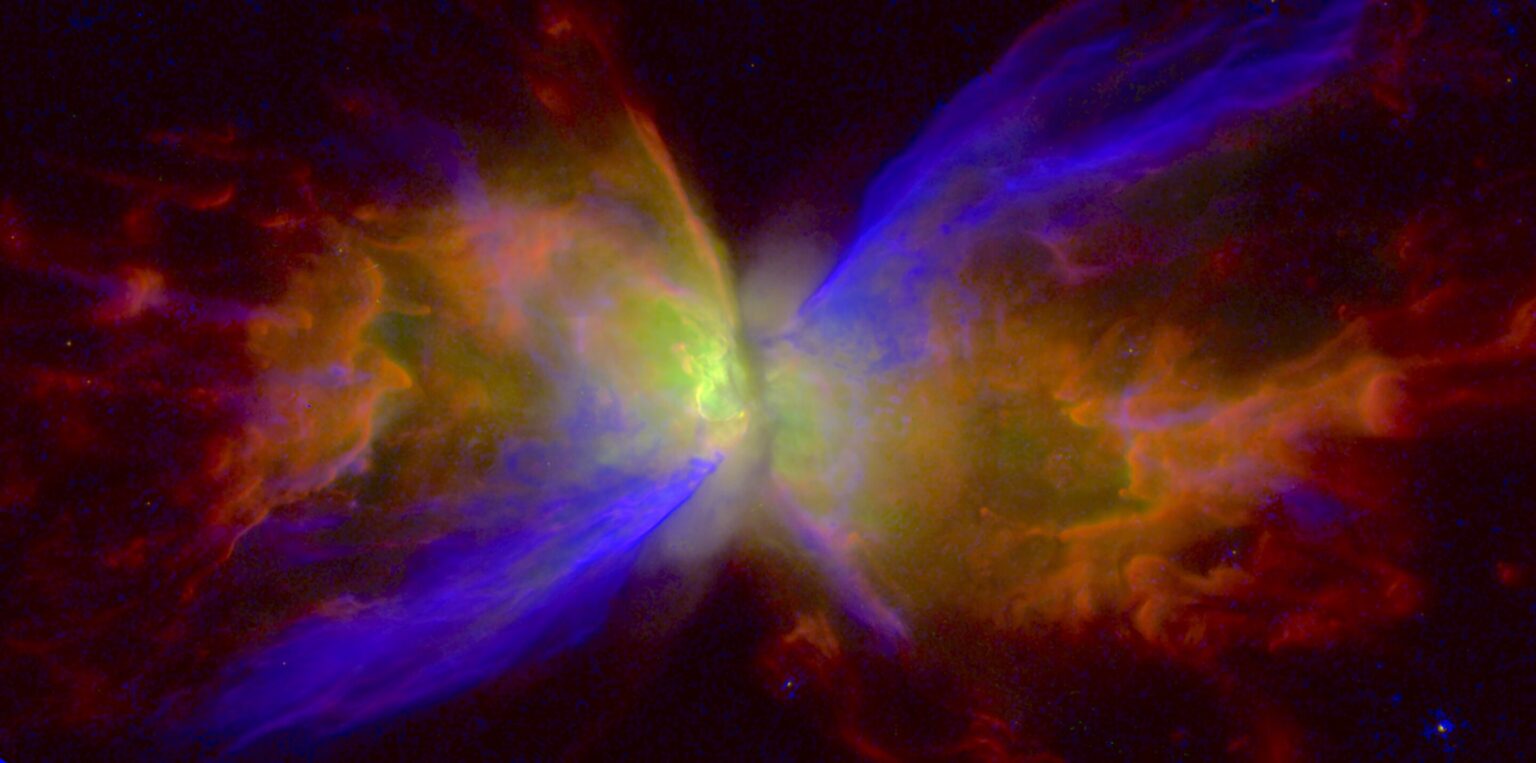Scientists studying the planetary Butterfly nebula have seen strange changes in its structure over the past 11 years. They suggest that the reason for this may be the gas jets that continue to push material.

Mysterious Butterfly Nebula
The Butterfly nebula really resembles an insect with giant wings in its shape. However, scientists attribute it to the class of planetary nebulae — objects that are usually not very similar to it and rather resemble rings or disks.
They are formed after the red giants exhaust their fuel reserves and drop their outer shells, which are slowly expanding in space. It is believed that the same future awaits our Sun.
But when a red giant has a companion star, it can affect what a planetary nebula will look like. Instead of equal circles, jets and wings are formed, which determine the bilateral symmetry of the object formed from dust and gas.
Recently, it was possible to explain the origin of the Cat’s Eye nebula in this way. However, the Butterfly gave scientists a new surprise. Scientists who observed it with the Hubble telescope from 2009 to 2020 report that they saw significant changes in the “wings”.
Amazing processes in the nebula
Scientists from the Universities of Washington and Rochester report significant mass movements of matter in the Butterfly nebula over the course of just 11 years. They were caused by “blowing” solar winds from the central star. Despite the fact that it is believed that it is dying, its temperature is 200 times higher than that of the Sun.
The researchers concluded that the reason for this was the ejection of many jets of gas by the star at once. It began about 2,300 years ago, and ended about 900. Since then, they have been slowly flying apart in space.
Until now, scientists have not seen anything like this. In their opinion, the central star could merge with its companion or pull part of the mass away from it. In order to find out, it is planned to aim the James Webb Telescope to the central part of the Butterfly nebula.
It works in the infrared range. These rays pass well through gas and dust. So, this tool is able to see what is actually happening in the center of the Butterfly nebula.
According to phys.org
Follow us on Twitter to get the most interesting space news in time
https://twitter.com/ust_magazine

